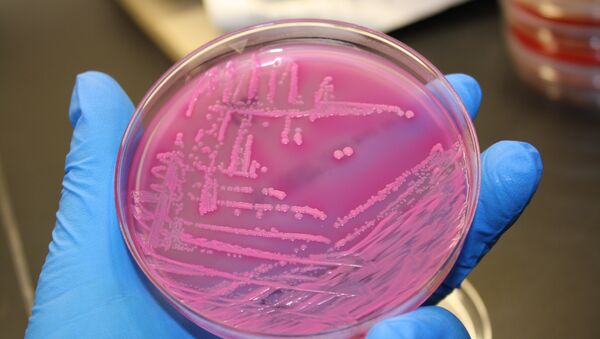According to US Defense Department medical research, a strain of E. coli bacteria, resistant to a very powerful last-resort antibiotic called colistin, was found in the urine of a 49-year-old American woman. Researchers fear that this discovery "heralds the emergence of a truly pan-drug resistant bacteria."
While the bacteria does not spread at the rate of an epidemic, and is susceptible to other antibiotic cocktails, it is the bacteria's ability to easily swap genes that is of major concern. The gene, called mcr-1, which is responsible for colistin resistance, is carried on a piece of material called a plasmid, which makes it easy for one species of bacteria to pass it to another.
If this gene is passed to another pathogen bacteria that has already developed resistance to other antibiotics such as penicillin, tetracycline or ceftaroline, a potentially invincible organism could appear, rendering today's antibiotics useless.
If such a superbug is found to exist and spread, it would take the world back to a time when there were no antibiotics, says Dr. Tom Frieden, director of the Centers for Disease Control and Prevention. And the chances of that, unfortunately, are good odds, even by Vegas-style betting.
There is a bacteria called carbapenem-resistant enterobacteriaceae, or CRE. It is notorious for being resistant to carbapenem-class antibiotics, and colistin is the only treatment doctors currently have. Such hard-to-kill bacteria are called "superbugs." If CRE absorbs the mcr-1 gene, it would become a "nightmare superbug" unless a new class of antibiotics is created.
Microorganisms are known to evolve defense mechanisms quickly. Even before penicillin was introduced in 1943, staphylococcus germs had genes that would have made them resistant to its effect. After tetracycline was introduced in 1950, it took nine years for a tetracycline-resistant strain of Shigella to evolve. Methicillin-resistant Staphylococcus aureus (MRSA) evolved just two years after methicillin was invented in 1960. The last new antibiotic to be introduced was ceftaroline, in 2010, and it took only a year for the first staph germ to evolve that resists its effects.
Thankfully, the E. coli strain found in the US woman was not resistant to carbapenems, and she was able to be treated successfully.
Colistin has serious side effects, including kidney damage, making it a prescription of last resort.


